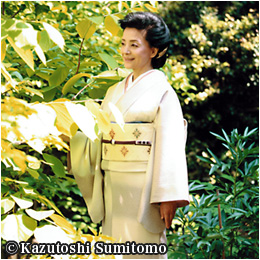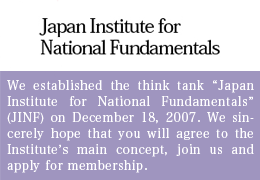JAPAN’S INFLEXIBLE NUCLEAR REGULATORY AUTHORITY HAMPERING CUTTING-EDGE CANCER THERAPY
During a visit last month to Kyushu Electric’s Sendai Nuclear Power plant (located in Kagoshima Prefecture, southern Japan), I was struck by just how bureaucratic, inflexible, and irrational the Nuclear Regulation Authority (NRA) can be.
Since the Great East Japan Earthquake of March 2011, the nation’s safety standards for nuclear power generation have been drastically strengthened, making them clearly among the world’s most stringent. The Sendai plant is the first to be given NRA’s permission for a restart of operations out of the nation’s 50-odd nuclear power stations that were shut down immediately after the melt-down at Fukushima No. 1. The reopening is a step in the right direction for Japan’s nuclear industry, but of considerable concern is the evidence I found everywhere across the spacious plant of the NRA’s efforts to impose its often unreasonable policies.
For example, there were a large number of huge vehicle-mounted water pumps; water cannons capable of discharging massive volumes of water anywhere across the plant; high voltage generators, also vehicle-mounted; emergency vehicles; and condensate tanks, several of which were tied to thick concrete floors with heavy metal chains. A precautionary measure against tornadoes, obviously, but it made me wonder if going to this extent is really necessary.
The NRA reportedly had Kyushu Electric submit an appalling 400,000 pages of documents before giving permission to resume nuclear power generation at Sendai. I was under the impression from my previous coverage that the utility had submitted 100,000 pages, but was never aware it actually had been 400,000 pages instead. In my calculation, if put in 150 folders each 10 centimeters thick, 100,000 pages of documents would amount to roughly 15 meters (about 50 feet)—about the height of an average five-story building. Only after submitting documents equivalent to four piles of holders each measuring 15 meters high, did the Sendai complex manage to meet the NRA’s requirements.
Who at the NRA examined such a huge volume of documents? Kyushu Electric staffers laboriously delivered the documents on handcarts, but what did the NRA do with the piles of papers? Did they have the folders piled up in storage before reviewing them? I suppose Japan is the only country in the world today—at least among advanced nations—that still employs such a pre-modern method of conducting safety examinations of nuclear plants.
In the US, virtually all exchanges between the Nuclear Regulatory Commission (NRC) and utilities are done expeditiously via the Internet. That way, the NRC can always review the current situation at any utility, while the latter can also send its queries and questions, receiving answers and instructions from the authorities speedily. Why isn’t data computerization, common elsewhere in the world, implemented in Japan? What are the reasons for our regulatory body requiring that all data be submitted in print? The method employed by the NRA is ridiculous.
The NRA is not just unnecessarily burdening utilities as demonstrated in the case of the Research Reactor Institute (RRI) at Kyoto University. Inflexible NRA regulations have forced the institute to suspend its world-class leading edge cancer studies over the past 18 months, preventing it from implementing a therapy that annually saved several dozen cancer patients. The operation of nuclear reactors must naturally be safeguarded, but it is clear that the NRA has gone too far with its regulations and faces some significant issues.
Threat to Human Lives
The five members of the body have badly misinterpreted the independence of their powerful body, which is protected by Article 3 of the National Government Organization Law. They seem to feel it is their prerogative to remain aloof and isolated, shutting off communication with utilities. Ordinarily, the NRA must willingly communicate with the operators who know best what is going on at their respective plants, give them advice, and work in close cooperation with them in a concerted effort to enhance the safety of the facilities. However, in reality the NRA pays little attention to the actual situation on the ground, conducts safety examinations that are wide of the mark, and have produced results that are in fact threatening human lives.
The truth of the matter is that two pioneering studies at Kyoto University—basic cancer research using neutrons and a new type of reactor that accelerates the transformation of certain nuclear elements—have been completely blocked by the thick wall of the NRA.
One of the studies involving the use of neutrons pertains to a type of radiation therapy called “boron neutron capture therapy” (BNCT).
Explains Professor Hironobu Unezaki of the Department of Basic Nuclear Science at Kyoto University:
“It is our BNCT cancer therapy that we at Kyoto University view as our single most valuable contribution to society. We’ve previously devoted one day per week to BNCT, annually managing to save between 40 to 50 lives where chemotherapy proved difficult to apply.”
In point of fact, Kyoto University has since 1990 treated more than 500 patients under its BNCT program, boasting the world’s highest standard in terms of the number of patients treated and the scope of BNCT applied.
With BNCT, special agents containing boron are injected into the patient, with neutrons irradiated at the exact moment when cancer cells take in the agents. Boron breaks down as soon as it absorbs the neutrons, generating alpha rays that kill the cancer cells. Because alpha rays travel a distance shorter than the cell, they only kill cancerous cells without affecting contiguous normal cells. Since only cancerous cells are targeted, it means BNCT can be effectively used in highly malignant cases where the affected parts of a patient are intertwined with healthy tissue. Such operations had previously been impossible. With the scope of its application ranging from brain tumors to malignant melanoma, cancer of the tongue, oral cancer, parotid gland cancer, lung cancer, and liver cancer, there are high expectations for BNCT as a treatment strategy in the ultimate conquest of cancer.
Indispensable for BNCT’s success is a high level of coordination among three teams of experts—nuclear engineers who can securely handle neutrons produced by nuclear reactor; pharmacists who can develop agents containing boron; and medical experts committed to radiation therapy. Kyoto University’s RRI is the world’s only institution
that has all three of these teams of specialists. And yet, basic research on cancer therapy utilizing neutrons, including BNCT, has unduly been suspended by the NRA.
Leading the World
It is the NRA’s lack of flexibility and rationality, as evidenced at Sendai, that has led to this suspension, I feel. In 2013, the NRA meted out a stringent new safety standard by drastically strengthening the regulations governing the nation’s nuclear reactors for commercial power generation, applying the same standard to experimental and research reactors as well. While Unit 1 and Unit 2 at Sendai each has an output of 890,000 kilowatts, the two research reactors at Kyoto University generate 5,000 kilowatts and 100 kilowatts, respectively. The research reactor at Kinki University has an output of just 1 watt—equal to a miniature light bulb—which can sufficiently be cooled by air.
Regardless of the differences in the size and purpose of operations, however, the NRA applies the same standards to the reactors at Kyoto and Kinki Universities as it does to major commercial reactors. It demands that the universities apply strict countermeasures against earthquakes, tsunami, tornadoes, terrorism, airplane crashes, fires, and active faults in the premises, along with horrendous volumes of documents guaranteeing the safety of their research reactors.
Researchers and professors like Unezaki at Kyoto University have over the past two years been busy coping with the NRA, with enormous paperwork becoming their main responsibility while their primary research lags seriously behind. Students have been suffering, too, unable to pursue their studies since the reactors were shut down. In a desperate measure, Kinki University has sent its students to South Korea to continue their studies, using an experimental reactor at Kyung Hee University near Seoul. Previously, Japan annually invited some 20 elite Korean students from six universities, including Kyung Hee and Seoul National, to study at Kyoto’s RRI. But the situation has since been completely reversed.
Along with BNCT, studies on a reactor employing the accelerator-driven subcritical system (ADS), in which Kyoto University leads the world, have also been suspended. An ADS reactor is used to transform long-lived, heavier elements contained in radioactive waste that are more difficult to handle than uranium and plutonium, such as amerium, into elements with short half lives. ADS is an excellent system for nuclear transmutation. Remarks Prof. Unezaki:
“All nations around the world are conducting studies on this next-generation reactor. Kyoto University is a pioneer of the conceptual design and experimental data for the ADS reactor. Other nations are fiercely trying to catch up with us, but Kyoto University still leads the world in this field.”
Prof. Unezaki is eagerly looking forward to an early resumption of nuclear studies at Kyoto University not just to nurture human resources for the future but to respond to the needs of present-day students who seriously aspire to study nuclear energy. The government must use its supervisory prerogatives to see that the NRA better foster the nation’s pioneering studies as well as better protect the lives of its citizens.
(Translated from “Renaissance Japan” column no. 687 in the January 14, 2016 issue of The Weekly Shincho)








